Journalists are eligible for free email subscriptions to SEJournal, including TipSheet, WatchDog (on access issues) and more.
| Agenda | Coverage | Registration | Lodging/Transportation | Español | About Miami |
All sessions, as well as registration, exhibits and breaks, will be at the InterContinental Miami Hotel,
100 Chopin Plaza, unless otherwise indicated.
Registration
5:30 - 10:00 a.m.
Sign up for Beat Dinners and Mini-Tours at the nearby SEJ table. If you didn’t sign up ahead of time for the Thursday tours, Saturday evening party, or Sunday morning breakfast, there may still be room — please check with registration.
Location: Outside the Grand Ballroom (near elevators)
SEJ Information Table
Sign up here for Beat Dinners and Mini-Tours. Find information about membership and services, pick up copies of SEJournal, TipSheet, FOI WatchDog, and other publications.
Location: Outside the Grand Ballroom (near elevators)
Day Tours
Advance registration is required for all Thursday tours. Please dress for the outdoors and bring rain gear, a good pair of walking shoes and extra water.
All buses will depart from just outside the main entrance of the InterContinental. The Gone Fishing tour boat will be docked at the pier adjacent to the hotel. Exit the front door, turn right, and walk to the water. Departure times vary (see below). Buses will not wait, so be sure to be on board 10-15 minutes before departure time. We will take standby passengers as space allows shortly after departure time, so you'll lose your seat if you're not on board before departure time.
All buses (and boats) will return to the InterContinental by 5:00 p.m. for the Independent Hospitality Receptions, where attendees will find hors d'oeuvres, drinks, press kits and good cheer.
1. Dive on a Reef, Visit an Undersea Lab
|
|
(6:30 a.m. departure, $100 fee, includes lunch, tanks, weights and boat rental)
Scuba divers, you have an unprecedented opportunity! Our first dive will be a rare trip into the waters just outside Aquarius, the only undersea research lab in the world, anchored 55 feet below the surface. On the next dive, discover a groundbreaking coral nursery among the first to actually grow threatened corals and transplant them onto dying reefs. Underwater video provided free. Drive time — 2 hours. A valid dive card is mandatory for this trip. If you haven’t been on a dive in the past year, you are strongly encouraged to attend a one-day refresher, like a PADI or NAUI-approved course. Bring your own dive gear, or rent it on site for an additional fee. SEJ members given preference.
NOTE: This tour is full.
Tour Leaders:
Alexa Elliott, Producer, WPBT Public Television, including award-winning series "Changing Seas"
Ken Weiss, Staff Writer, Los Angeles Times
Speakers:
Lad Akins, Director of Operations, Reef Environmental Education Foundation
Andrew Baker, Associate Professor, Marine Biology & Fisheries, Rosenstiel School of Marine and Atmospheric Science, University of Miami; and Pew Fellow in Marine Conservation
Billy Causey, Southeast Regional Director, Office of National Marine Sanctuaries, National Oceanic and Atmospheric Administration
Jane Lubchenco, Under Secretary of Commerce for Oceans and Atmosphere, and Administrator, National Oceanic and Atmospheric Administration
Peter Mumby, ARC Laureate Fellow, Pew Fellow in Marine Conservation, School of Biological Sciences, University of Queensland (Australia)
Ken Nedimyer, President, Coral Restoration Foundation Inc.; and Owner/Operator, Sea Life Inc.
2. Tag Wild Sharks with Your Bare Hands
(6:30 a.m. departure, $95 fee, includes lunch and boat rental)
|
|
|
Bags of shark fins. |
Just as shark populations worldwide are under intense pressure, due to the demand for shark’s fin soup in Asia, researchers are learning more than ever before. Join us as we tag along with Neil Hammerschlag, one of the nation’s foremost shark experts, as he searches for sharks off Florida’s shores. Capture video and stills on the water as you try out cutting-edge scientific techniques. Help take muscle samples, biopsies, fin clips, and blood draws from sharks, while also helping to measure and attach satellite tags on the animals. Along the way, you’ll encounter some of the species lurking in the waters off Islamorada, including blacktip, bull, lemon, nurse, blacknose, tiger and great hammerhead sharks. Drive time — 2 hours. SEJ members given preference. Coverage.
|
Measuring and placing a satellite tag on a hammerhead shark. © Photo courtesy of Neil Hammerschlag. Click to enlarge. |
NOTE: This tour is full.
Tour Leaders:
Beth Daley, Environmental Reporter, The Boston Globe
Juliet Eilperin, National Environmental Reporter, The Washington Post; and Author, Demon Fish: Travels Through the Hidden World of Sharks
Speakers:
Neil Hammerschlag, Research Assistant Professor, University of Miami; and Founder and Director, RJ Dunlap Marine Conservation Program
3. Big Sugar, Big Cleanup, Big Lake: The Sugar Industry, the Everglades Cleanup and Lake Okeechobee
(7:00 a.m. departure, $35 fee, includes lunch and boat rental)
Join this panoramic trek to the north edge of America’s Everglades, its 730-square-mile headwaters lake and the massive sugarcane region in between. This trip will highlight agriculture’s Everglades impacts, the government-led cleanup of nutrient pollution and the inherent conflict of one of the nation’s largest freshwater lakes providing flood control, water supply and wildlife habitat. We’ll visit the “machinery” of the Everglades cleanup: vegetation-powered filter marshes and diesel-fueled pump stations. Rolling through a vast farming landscape, we’ll talk to sugar growers about their environmental BMPs, climb the Herbert Hoover Dike to learn about its vulnerabilities and take a boat ride on Lake O. Drive time — 4 hours. Coverage.
NOTE: This tour is full.
Tour Leaders:
Cynthia Barnett, Senior Writer, Florida Trend Magazine; and Author, Mirage: Florida and the Vanishing Water of the Eastern U.S. and Blue Revolution: Unmaking America's Water Crisis
Neil Santaniello, Instructor, School of Communication & Multimedia Studies, and Director, Scripps Howard Institute on the Environment, Florida Atlantic University
Speakers:
Stuart Appelbaum, Deputy District Engineer, Everglades Restoration, Jacksonville District, U.S. Army Corps of Engineers
Ernie Barnett, Director, Office of Everglades Policy and Coordination, South Florida Water Management District
Donald Fox, Biological Administrator, Florida Fish and Wildlife Conservation Commission
Paul Gray, Okeechobee Science Coordinator, Audubon of Florida
David Guest, Managing Attorney, Florida Office, Earthjustice
Melodie Naja, Water Quality Scientist, Everglades Foundation
Judy Sanchez, Senior Director, Corporate Communications and Public Affairs, U.S. Sugar Corporation
Tom Teets, Federal Policy Chief, Office of Everglades Policy and Coordination, South Florida Water Management District
Malcolm “Bubba” Wade, Senior Vice President, Corporate Strategy and Business Development, U.S. Sugar Corporation
4. Everglades National Park: Pythons, Gators and Billions for Restoration
(7:30 a.m. departure, $40 fee, includes lunch and boat rental)
|
|
Visit the alligator-rich, python-plagued wilderness of Everglades National Park, a forbidding wilderness struggling with water shortages, invasive species, and other consequences of South Florida’s population boom. We’ll take a boat up Tarpon Creek into Coot Bay and Whitewater Bay to look for alligators, crocodiles, manatees and mangrove cuckoos. We’ll meet Burmese pythons — constrictors that can reach lengths of up to 20 feet — that have established themselves in the park, killing native wildlife. We’ll get wet walking through the sawgrass of the park’s Pahayokee section. And we’ll wrap up with a walk down the Anhinga Trail, where a boardwalk winds through one of the most wildlife-rich sections of the park. Drive time — 3 hours. Coverage.
NOTE: This tour is full.
Tour Leaders:
David Fleshler, Staff Writer, South Florida Sun-Sentinel
Christine Woodside, Freelance Journalist
Speakers:
Linda Friar, Public Information Officer, Everglades National Park
Jon Jarvis, Director, National Park Service
Robert Johnson, Director, South Florida Natural Resources Center
Dan Kimball, Superintendent, Everglades and Dry Tortugas National Parks
Jeffrey Olson, Office of Communications, National Park Service
Bill Reynolds, Associate Regional Director, Southeast Region, National Park Service
Dawn Shirreffs, Everglades Restoration Program Manager, National Parks Conservation Association
Skip Snow, Biologist, Everglades National Park
Jonathan Ullman, South Florida/Everglades Organizer, Sierra Club
5. Gone Fishing: Sportfishing, Tourism and the Challenges of Protecting Fish Stocks
(8:00 a.m. departure, $60 fee, includes lunch and fishing boat rental)
Recent studies found recreational fishing is having a significantly larger impact on the overfishing crisis than was previously thought. Yet progressive recreational fishing organizations are among the leaders in moving toward sustainability. So get out on the water for a day in the Florida sunshine, do some catch-and-release fishing in “the sportfishing capital of the world,” and see what onboard experts say about protecting their future catch. Fishing boat will leave directly from docks near the hotel. Drive time — 0 hours. Coverage.
Tour Leaders:
Don Hopey, Environment Reporter, Pittsburgh Post-Gazette
Curtis Morgan, Environmental Reporter, The Miami Herald
Mike Zimmer, Executive Producer, "The Florida Insider Fishing Report" and "Sportsman's Adventures"; and CEO of Mike Zimmer Productions
Speakers:
Jerry Ault, Professor, Rosensteil School of Marine & Atmospheric Science, University of Miami
Sue Cocking, Outdoor Reporter, The Miami Herald
Sera Drevanak, Senior Associate, Policy Analysis, Southeast and Caribbean Fish Conservation Campaign, Pew Environment Group
6. A Swamp Slog with Clyde Butcher
|
|
|
Clyde Butcher. |
(8:30 a.m. departure, $30 fee, includes lunch)
The Everglades is a uniquely magical place, and the ultimate case study in our abusive relationship with nature. There’s no better introduction to the Everglades than a knee-deep hike through Big Cypress Preserve with the legendary photographer Clyde Butcher. And there’s no better introduction to the Everglades story than a bus trip along historic Tamiami Trail, from Miami’s urban core and exurban sprawl through Indian country and the River of Grass. On the ride to Clyde, experts will explain what happened to South Florida’s ecosystem and how the government is trying to fix it, with stops at a proposed skyway that could help restore Everglades flows, and at the national park that’s keeping part of the dream alive. Wear long pants, long-sleeve shirts and crappy shoes; you’ll get some swamp on you! Drive time — 3 hours. Coverage.
NOTE: This tour is full.
Tour Leaders:
Michael Grunwald, Senior Correspondent, TIME Magazine; and Author, The Swamp: The Everglades, Florida and the Politics of Paradise
JoAnn Valenti, Professor Emeritus of Communications, Brigham Young University; former SEJ board member; and Florida native
|
SEJ board and staff swamp slog on a pre-conference site visit. |
Speakers:
Captain Franklin Adams, Naples, Florida
John Adornato, Regional Director, Sun Coast Regional Office, National Parks Conservation Association
Joe Browder, Environmental Consultant; and Partner, Dunlap & Browder
Clyde Butcher, Photographer, Clyde Butcher Photography
Pedro Ramos, Superintendent, Big Cypress National Preserve, National Park Service
Tom Van Lent, Senior Scientist, The Everglades Foundation
7. Island Sun, Trashy Electricity and a Whole Lotta Atoms in Between
(9:00 a.m. departure, $30 fee, includes lunch)
NOTE: This tour — originally called "Today’s News, Tomorrow’s Nukes" — has been broadened in scope to feature a cross-section of energy issues.
We'll board a boat at emerald-green Biscayne National Park, America's only one that's 95 percent ocean, and be joined by National Park Service personnel out to Adams Key — an island that could be viewed as a prototype for others because the government has used federal stimulus grant money to power all of its buildings there with the sun. See the kind of solar panel designs that have been gradually entering the residential marketplace worldwide in recent years, some which even look like roofing tiles. From there, we'll cruise past Florida Power & Light's Turkey Point nuclear power complex en route to South Miami City Hall, 17 miles downwind, where we'll discuss Turkey Point's planned expansion and the future of America's nuclear power in the aftermath of Japan's Fukushima disaster. The final stop will be at Covanta Energy's 26-year-old facility in Doral, Fla., one of several across the country in which municipal waste and biomass are used to generate renewable energy while also recovering tons of metal for recycling. Drive time — 2.5 hours. Coverage.
Tour Leaders:
Tom Henry, Environment Reporter, The (Toledo) Blade
Chuck Quirmbach, Reporter, Wisconsin Public Radio
Roger Witherspoon, Freelance Journalist on Energy and the Environment
Speakers:
Peter Bradford, Adjunct Professor, Institute for Energy and the Environment, Vermont Law School; Vice Chair of the Board, Union of Concerned Scientists; and former Commissioner, U.S. Nuclear Regulatory Commission
Eliot Brenner, Director, Office of Public Affairs, U.S. Nuclear Regulatory Commission
Paul Gilman, Chief Sustainability Officer, Covanta Energy
Jack Grobe, Deputy Director for Engineering and Corporate Support, U.S. Nuclear Regulatory Commission
Mark Lewis, Superintendent, National Park Service
David Lochbaum, Nuclear Safety Engineer, Union of Concerned Scientists
Alex Marion, Vice President of Operations, Nuclear Energy Institute
The Honorable Philip Stoddard, Mayor, South Miami
8. South Florida and Sea Level Rise
(9:30 a.m. departure, $30 fee, includes lunch)
Southeast Florida, where the elevation rarely exceeds six feet, is one of the world’s largest urban areas most vulnerable to sea-level rise. Join us as we see actual impacts, hear street-by-street predictions and learn of Miami-Dade County’s mitigation projects and planning efforts. We’ll stop at the County’s Emergency Operations Center to learn about the deadly synergies between sea-level rise and hurricanes and how the EOC works with media on hurricane coverage. We’ll visit a salinity control station to discuss effects of sea-level rise on canal flow, flooding and salt-water intrusion into drinking water aquifers. And we’ll drive through an array of neighborhoods differing in elevation, socioeconomic conditions and potential sea-level rise impacts, offering real-world examples of the social, economic and environmental pressures facing planners as they struggle for Miami’s future. Drive time — 3 hours.
- "Accelerating Sea-Level Rise — Projections and Implications for South Florida," by Harold Wanless and Peter Harlem, 2011.
Tour Leaders:
Juliet Pinto, Assistant Professor, Department of Journalism & Broadcasting, School of Journalism & Mass Communication, Florida International University
Tom Yulsman, Co-director, Center for Environmental Journalism, and Associate Professor, University of Colorado
Speakers:
Hugh Gladwin, Director, Institute for Public Opinion Research, School of Environment, Art, and Society, College of Arts and Sciences; and Associate Professor, Department of Sociology and Anthropology, Florida International University
Nichole Hefty, Climate Change Program Coordinator, Miami-Dade County Permitting, Environment and Regulatory Affairs
Barry Heimlich, Research Affiliate, Florida Center for Environmental Studies, Florida Atlantic University
Sharlene Leurig, Senior Manager, Insurance Program, Ceres
Jayantha Obeysekera, Director, Hydrologic & Environmental Systems Modeling Department, South Florida Water Management District
Nixsa Serrano, Bureau Manager/Operations Section Chief, Department of Emergency Management, Miami-Dade County
Harold Wanless, Professor and Chair of Geological Sciences, College of Arts and Sciences, University of Miami
9. Eye of the Hurricane: The National Hurricane Center and the New “Wall of Wind”
|
|
|
Wall of Wind fans. |
(10:00 a.m. departure, $30 fee, includes lunch)
Join us for a tour of the latest in hurricane research and forecasting, featuring scientists who fly into the center of the storm; meteorologists who predict the paths and intensities of the world’s largest storms at Florida International University; and scientists delving into the reason houses and other buildings blow apart during hurricane-force winds. We’ll meet with the director and top scientists at the National Hurricane Center, witness a Category 5 hurricane in the new wind tower at the hurricane think tank and discuss vast improvements in airborne technology used to measure the strength and direction of hurricanes and the latest theories on how to predict when hurricanes strengthen. Drive time — 1 hour. Coverage.
Tour Leaders:
John Morales, Consulting Meteorologist, Climadata Corporation
Mark Schleifstein, Hurricane and Environment Reporter, The (New Orleans) Times-Picayune; Two-Time Pulitzer Prize Winner; and Co-Author, Path of Destruction: The Devastation of New Orleans and the Coming Age of Superstorms
Speakers:
James Franklin, Branch Chief, Hurricane Specialist Unit, National Hurricane Center, National Oceanic and Atmospheric Administration
Chris Landsea, Science and Operations Officer, National Hurricane Center, National Oceanic and Atmospheric Administration
Ed Rappaport, Deputy Director, National Hurricane Center, National Oceanic and Atmospheric Administration
Bill Read, Director, National Hurricane Center, National Oceanic and Atmospheric Administration
Jamie Rhome, Storm Surge Team Leader, National Hurricane Center, National Oceanic and Atmospheric Administration
Independent Hospitality Receptions and Ride-and-Drive Preview
5:00 - 9:00 p.m.
What could be better after a day of shark tagging, swamp slogging, deep-sea fishing, nuke duking, storm chasing, gator wrestling — and whatever else SEJ had you doing in the field — than to share some great conversation, food and drink in the Thursday evening independent receptions? Hosts include Bracewell & Giuliani, CERES, Covanta Energy, National Parks Conservation Association, Nestlé Waters North America, and Nissan.
Also take some time to browse through the exhibit area in the East and West mezzanine and find information and sources for apes and turtles, autos and energy, oceans and outer space — and so much more. Sign up to test-drive prototype alternative-fuel vehicles, back by popular demand, and leaf through samples of colleagues' reporting.
Location: Grand Ballroom and Mezzanine
Photography As Environmental Journalism
9:00 - 10:30 p.m.
Receding glaciers. Oily seabirds. Drowning polar bears. Drought-stricken land. Flooding rivers. If these words elicit vivid images in your brain, you can thank photographers who are conveying powerful environmental information in a way the written word will never match. Photographers have argued for generations that they are as much about journalism as writers. And, in a time when society's understanding of complex environmental issues is minimal, the photojournalist may be more important than ever. SEJ has assembled some of the most notable and impactful environmental photographers who have agreed to tell the tales behind their most compelling images. We'll meet in the InterContinental's state-of-the-art theater to see these images projected in high-def on the big screen. Coverage.
Moderator: Michael Kodas, Photojournalist, Reporter, Pulitzer Prize Winner, and Author, High Crimes: The Fate of Everest in an Age of Greed
Speakers:
Connie Bransilver, Conservation Photographer and Artist
Clyde Butcher, Photographer, Clyde Butcher Photography
Patrick Farrell, Staff Photographer, The Miami Herald; and Winner, 2009 Pulitzer Prize for Breaking News Photography
Carlton Ward, Conservation Photographer
Location: Theater
Wednesday, October 19
Friday, October 21
Saturday, October 22
Sunday, October 23







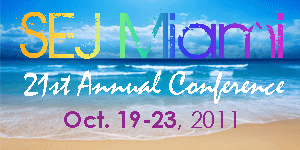
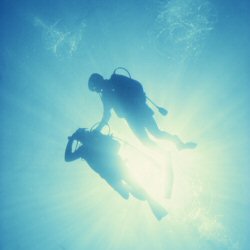
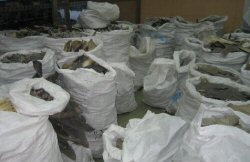
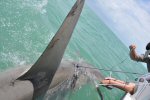
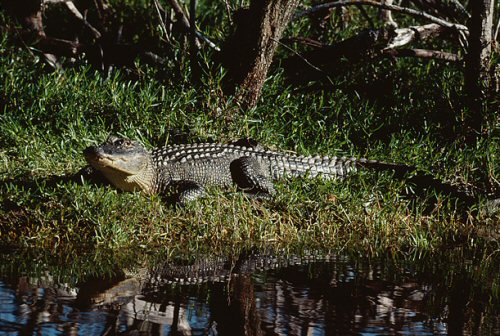
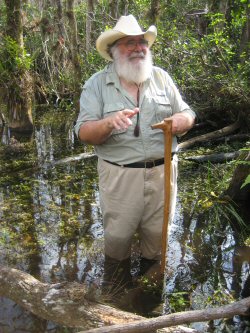

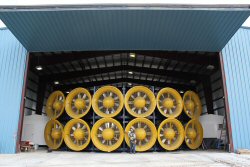






 Advertisement
Advertisement 



